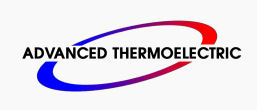IP Ratings and Definitions
IP Ratings or the International Protection Code is a standard rating system that indicates the type of environments a particular component or enclosure is capable of operating (according to rules IEC 60529). The IP rating takes the form of IP-**. Where each of the two "*" is replaced by a number corresponding to a particular rating for solids, then liquids.
The following lists explain the degree of protection for each of the numbers comprising the IP-**
Protection Index - First Character: Solids
0 = No special protection
1 = Protected against solid objects >50 mm in diameter (ie: hand contact)
2 = Protected against solid objects >12 mm in diameter (ie: fingers)
3 = Protected against solid objects >2.5 mm in diameter (ie: tools, wires)
4 = Protected against solid objects 1 mm in diameter (ie: small tools, small wires)
5 = Dust Protected (no harmful deposits)
6 = Dust Tight (no deposits)
Protection Index - Second Character: Liquids
0 = No special protection
1 = Protected against vertical dripping water (condensation)
2 = Protected against dripping water when tilted 15 degrees on either side
3 = Protected against rain up to 60 degrees vertical
4 = Protected against any water jet, any direction
5 = Protected against water jet with nozzle
6 = Protected against incoming water similar to sea waves
7 = Protected against the effects of immersion
8 = Protected against submersion
9 = Protected against close-range high-pressure, high-temperature spray downs.
As an example, a product with an IP rating of "55" will be: Dust Protected (no harmful deposits) and Protected against water jet with nozzle.
IP vs. NEMA Ratings
IP ratings and NEMA enclosure ratings are similar however, the scope of each is different. IP ratings are intended to provide guidance on the degree of protection against the intrusion of solid foreign objects and water. The ratings can be used to also estimate the protection the enclosure offers to persons from the hazardous parts inside. NEMA ratings require other hazards and conditions to be considered.
